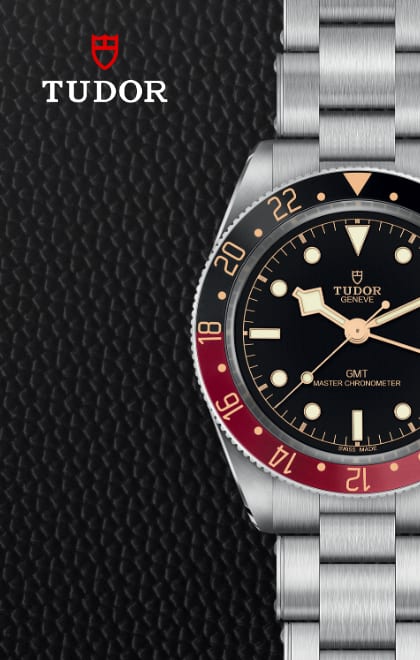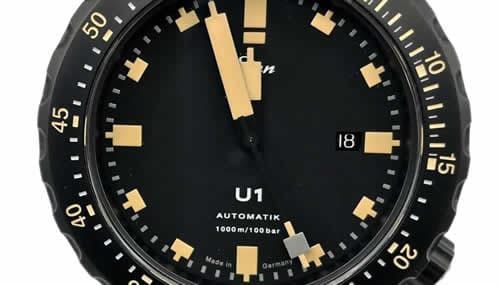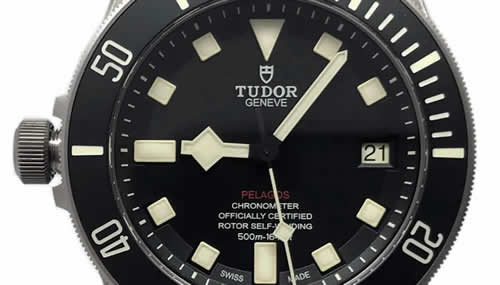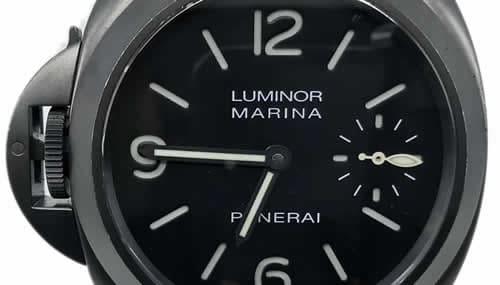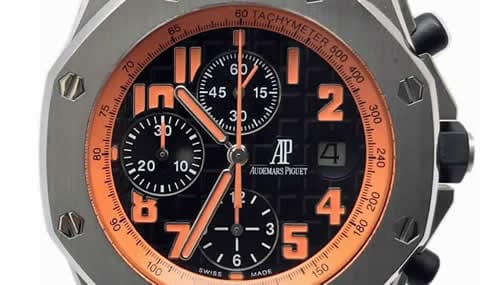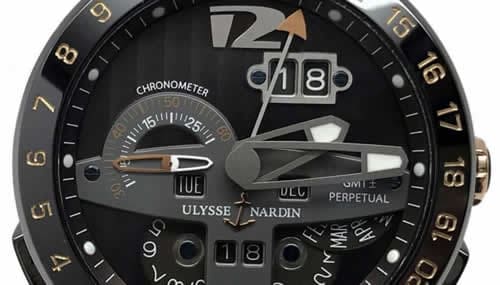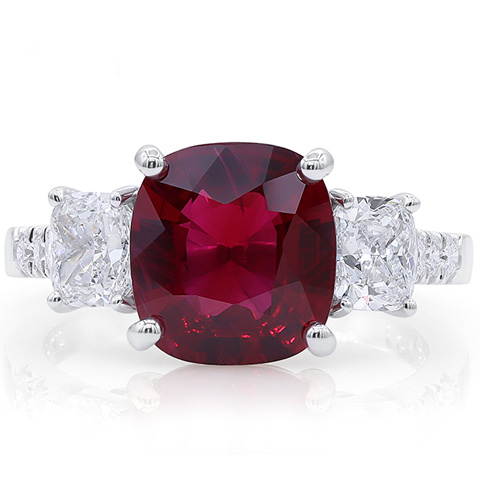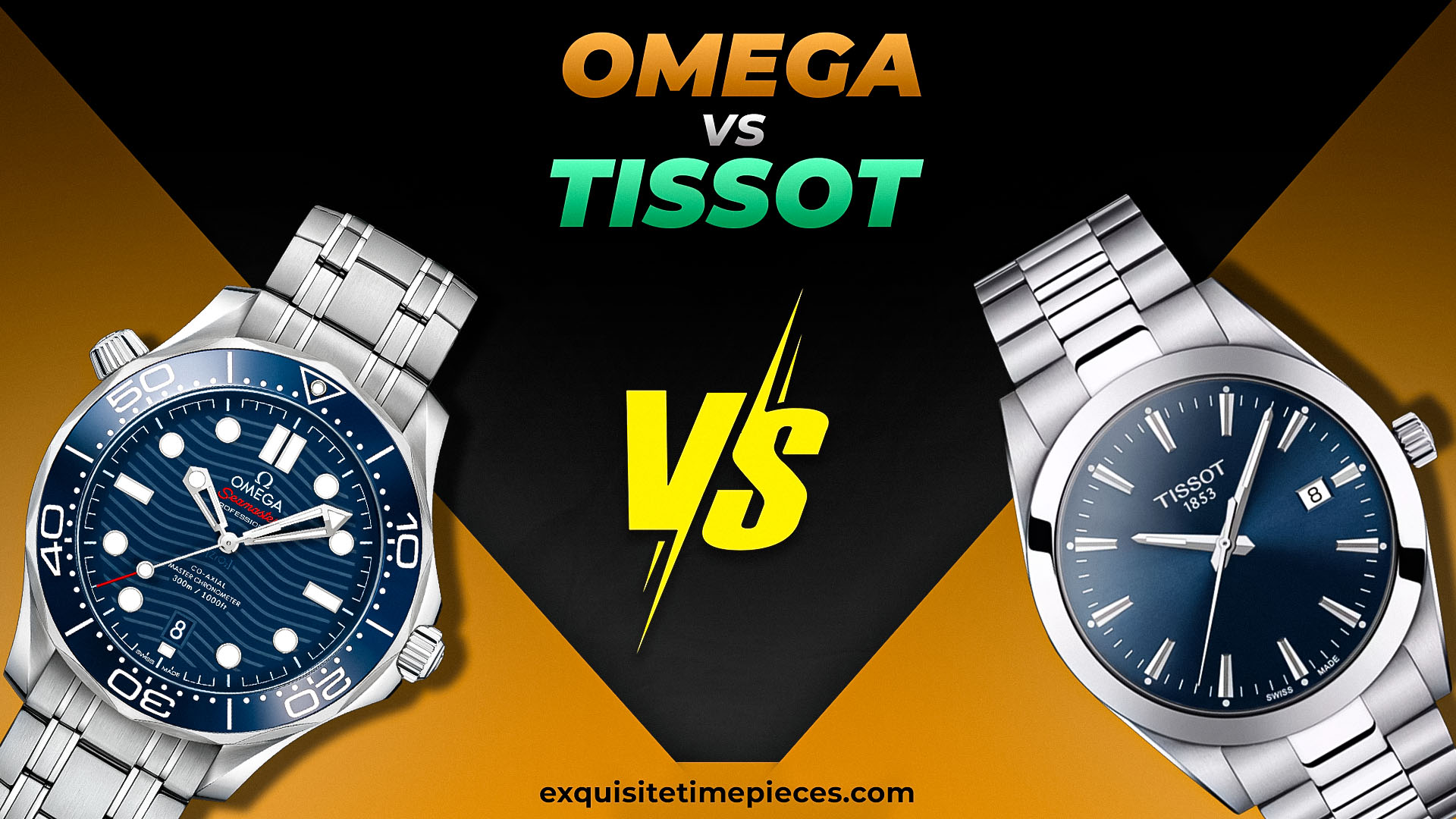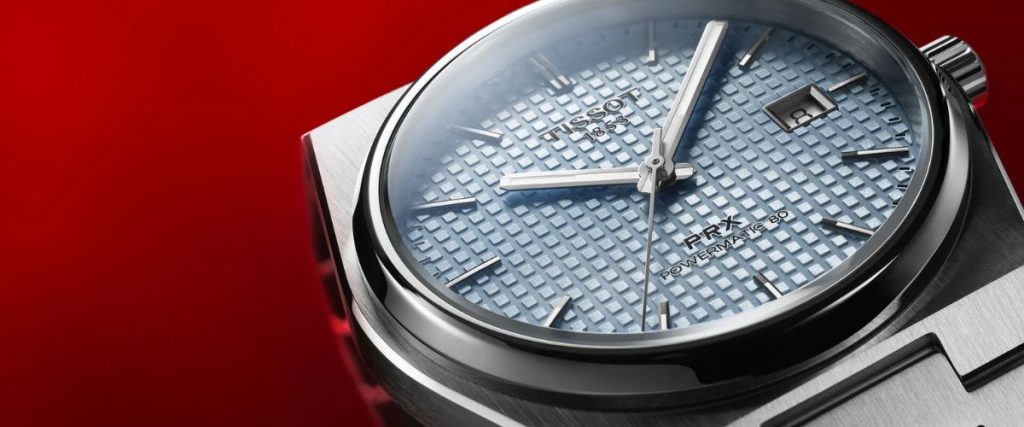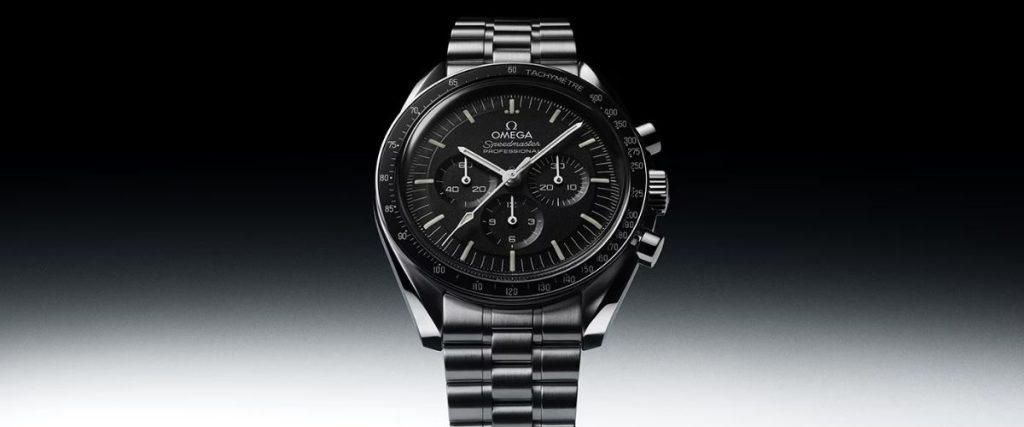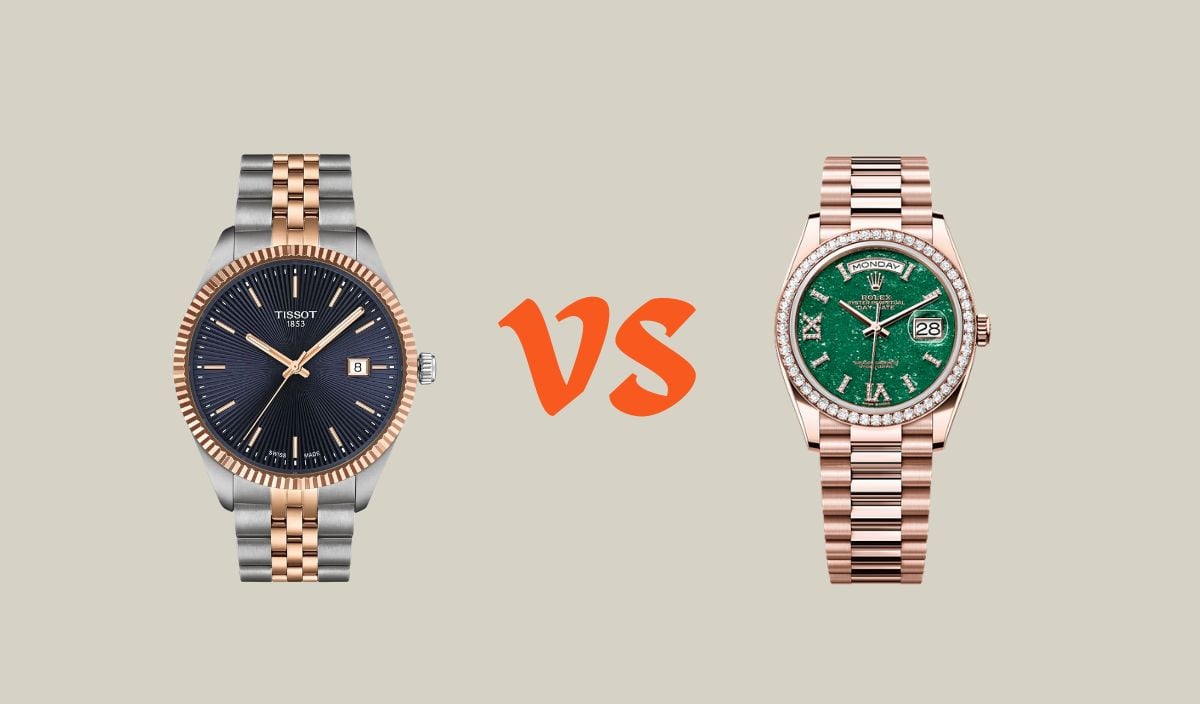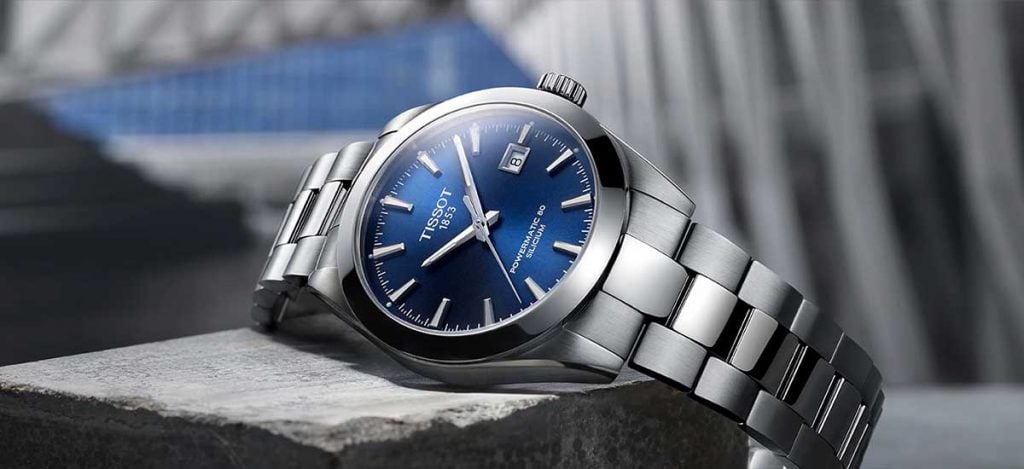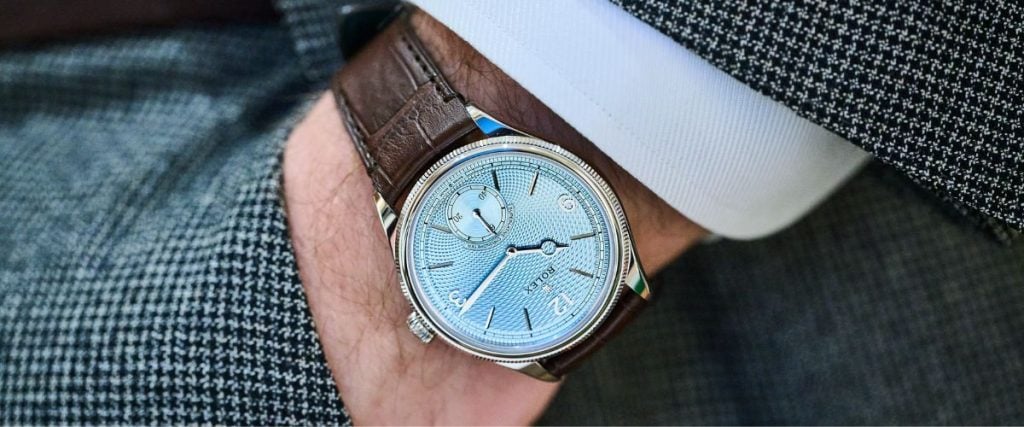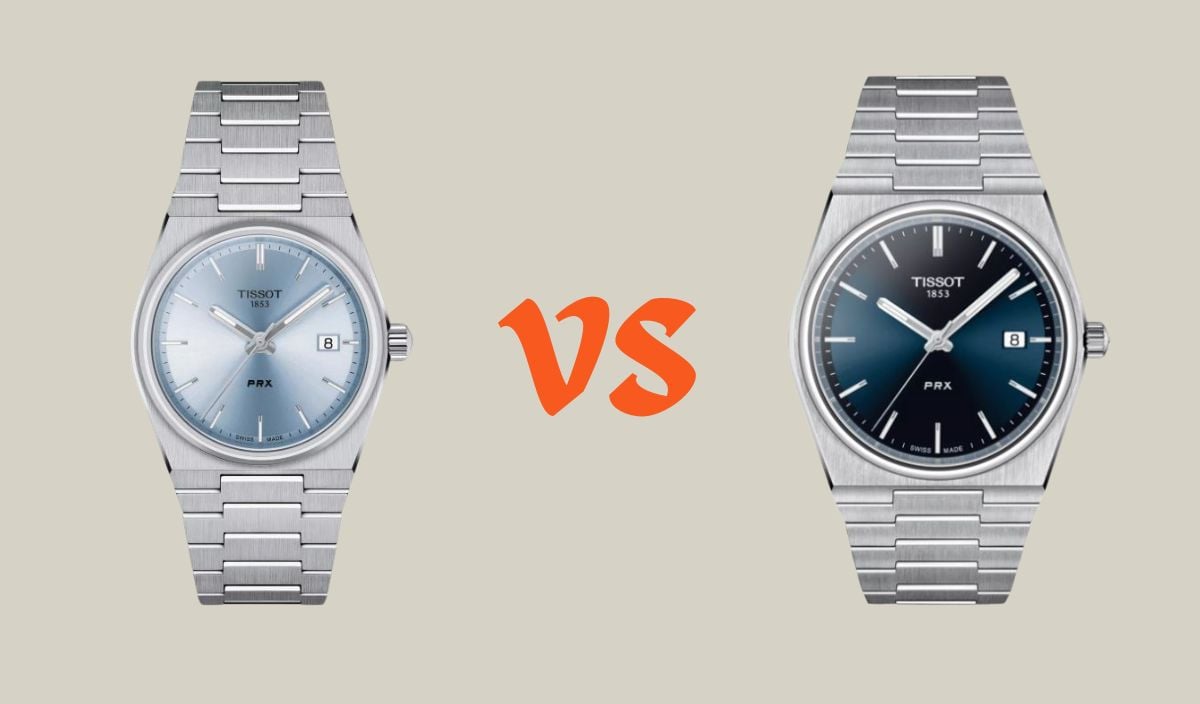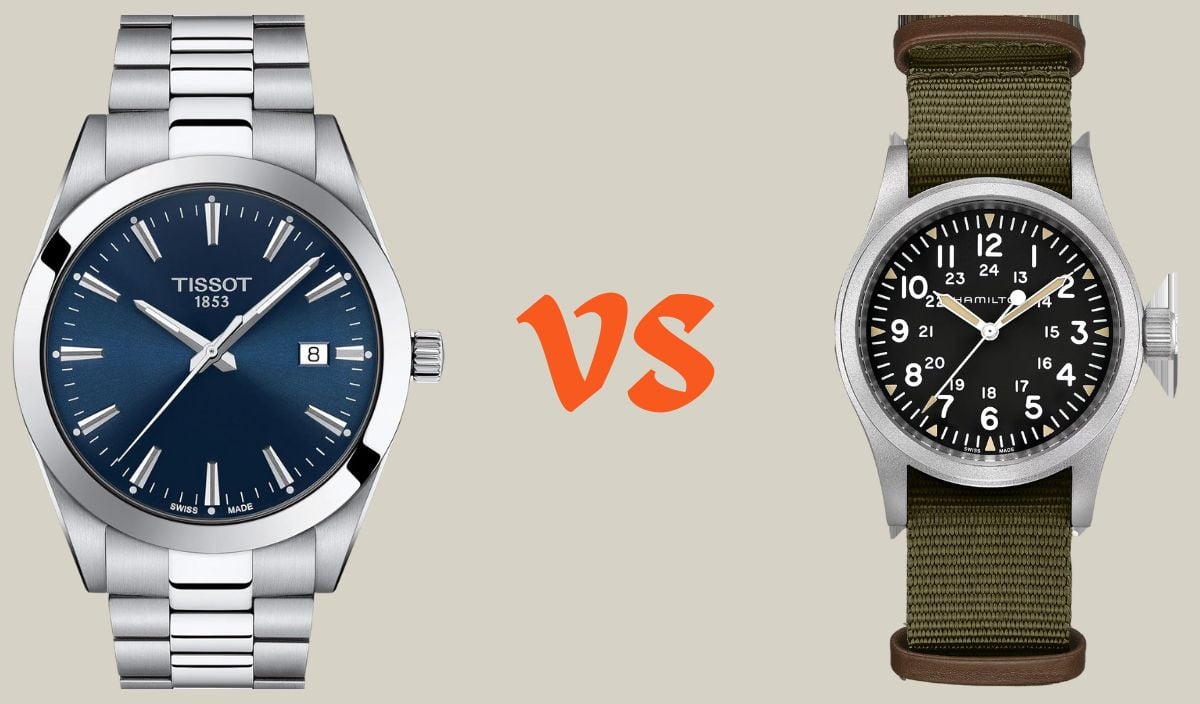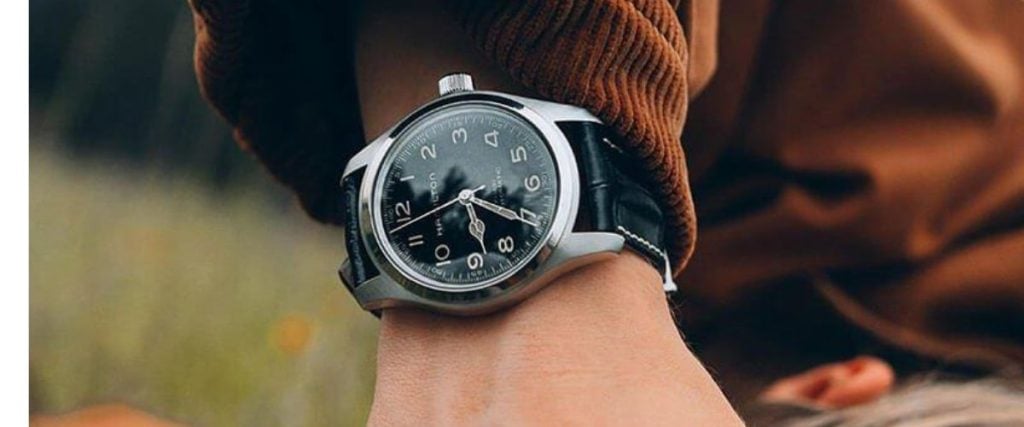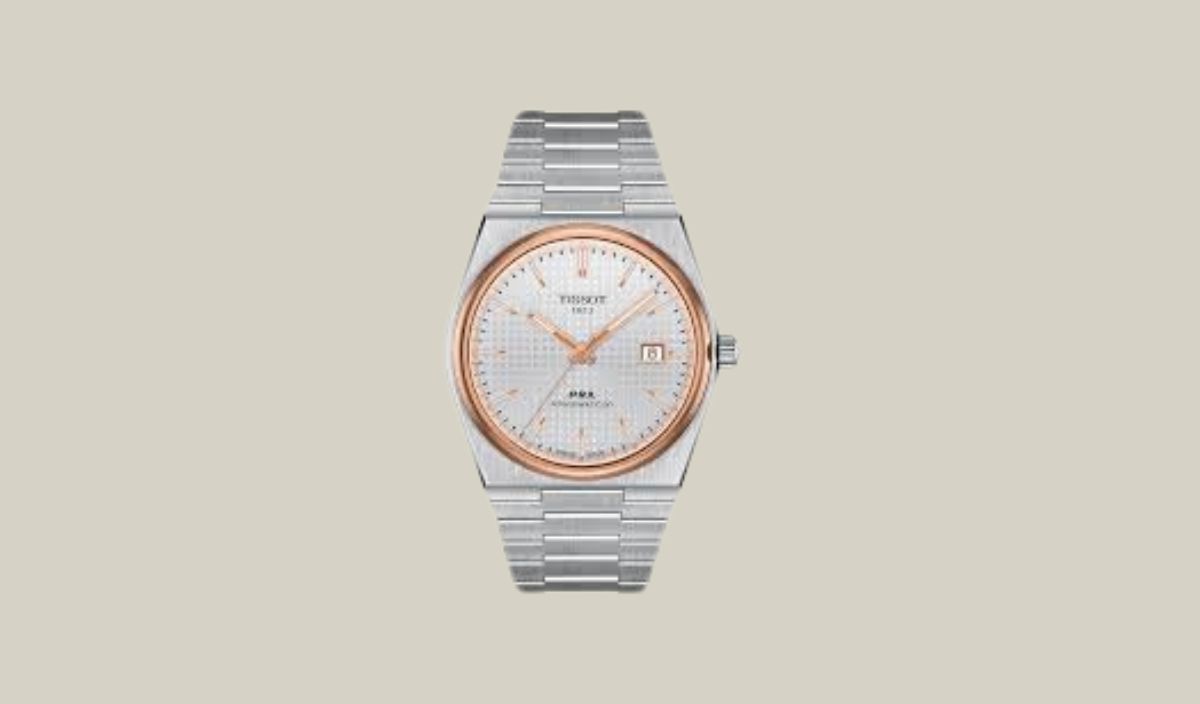
If there’s one watch I’ve worn and written about more than any other, it’s the Tissot PRX. And that’s no coincidence. It’s easily one of my favorite releases of the past few years. It helps that I have a soft spot for integrated sports watches, but even before the PRX, there weren’t many great options in my category in my price range.
Don’t get me wrong, I’d love to own an Audemars Piguet Royal Oak or a Patek Philippe Nautilus. But with several extra zeros on the price tag, they’re a dream for future me, not something I can pick up today.
So when Tissot arrived with the PRX, it felt like an early Christmas present. It arrived with the same beautifully fluid, integrated architecture, a stunning array of textured dials, and depending on the model, a Swiss-made mechanical movement with a power reserve that lasts well beyond the weekend.
As you can probably tell from the title, I’m a huge fan of this watch. But more importantly, I think the Tissot PRX is one of the best entry-level timepieces for any collector.
Today, I’ll be going through the different models in the collection, breaking down their features and helping you figure out which PRX might be the right fit for you. Or, if you’re still on the fence, whether it’s a watch you should even consider in the first place.
A Quick History of the Tissot PRX
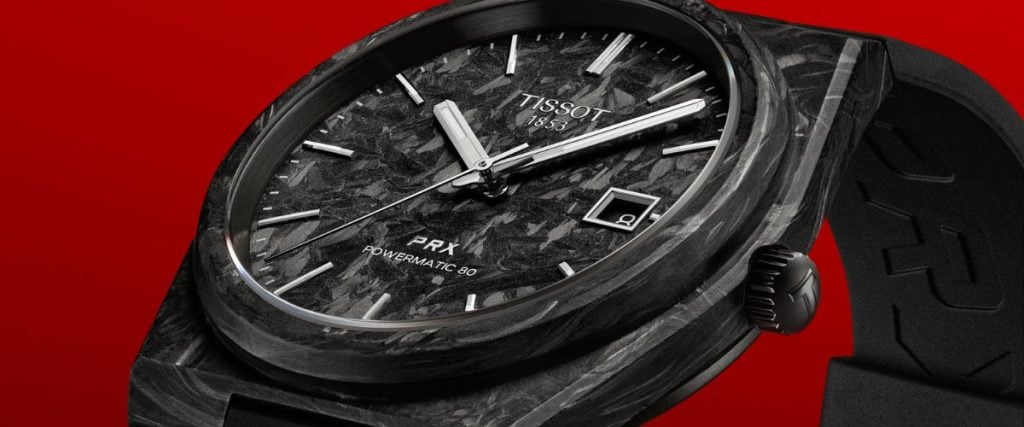
If you’re into watches, you know that the integrated sports watch craze didn’t start yesterday. It dates back to the 1970s, when legends like the Audemars Piguet Royal Oak and the Patek Philippe Nautilus set a new standard for sporty elegance. The problem though is that they were, and still are, priced well beyond the reach of most collectors.
Tissot also introduced the PRX in the 1970’s, right in the middle of this integrated design revolution. It had all the right ingredients including a sleek barrel-shaped case, a seamlessly integrated bracelet, and a quartz movement that made it precise, low-maintenance, and affordable.
The name “PRX” itself stood for Precision, Robustness, and 10-bar water resistance (with the “X” representing the Roman numeral for 10). Despite its looks and accessible pricing though, the PRX wasn’t all that successful and was discontinued after just a few years.
But then fast forward to 2021, and Tissot brought the PRX back to life. And unlike before, it’s had a whole lot more success. They didn’t just reissue it but they modernized it with upgraded movements and better materials all while staying true to its retro roots.
The tonneau-shaped case, the slim integrated bracelet, and the polished bezel are all back, but with upgraded finishing, sapphire crystal, and a mix of quartz and automatic movements.
The Powermatic 80 version, with its 80-hour power reserve and anti-magnetic Nivachron balance spring, was a particularly exciting addition for mechanical watch lovers.
Since its revival, the PRX collection has expanded rapidly. It now includes 35mm and 40mm options, a variety of dial colors, two-tone and gold PVD finishes, and even a chronograph model.
What started as a tribute to a nearly forgotten watch has become one of Tissot’s biggest success stories and in my opinion, one of the best value-for-money integrated sports watches you can buy today.
Breaking Down the Tissot PRX Collection
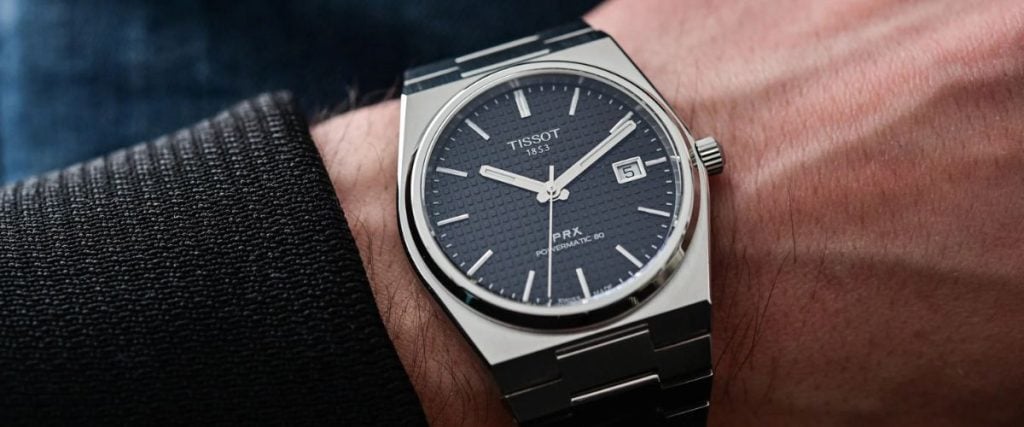
With the PRX lineup growing rapidly, there’s now a model for just about everyone. Here’s a quick rundown of the different versions and what sets them apart.
Tissot PRX 40mm Quartz – One of the most affordable entries into the PRX world, this model sticks closely to the original 1978 design with a slim 40mm case, integrated bracelet, and a sunray-brushed dial. It’s a great everyday watch with hassle-free quartz accuracy.
Tissot PRX 40mm Powermatic 80 – A step up in both mechanics and finishing, this version swaps the quartz movement for Tissot’s impressive Powermatic 80 automatic caliber, offering an 80-hour power reserve. It also gets a more intricate textured dial. A few standout variants even feature a knurled 18k rose gold bezel, not my personal favorite, but it adds a fun, luxurious twist.
Tissot PRX 35mm Quartz – A smaller, more unisex-friendly option with the same sunray-brushed dial and quartz movement as its 40mm sibling. Perfect for those who prefer a more compact fit.
Tissot PRX 35mm Powermatic 80 – The automatic version of the 35mm PRX, bringing the same textured dial and mechanical movement as the 40mm Powermatic 80, but in a more wearable size.
Tissot PRX 25mm – A recent addition, this ultra-compact PRX brings the integrated sports watch aesthetic to an even smaller, more jewelry-like size with a quartz movement.
Tissot PRX Chronograph – The most complicated PRX, featuring three subdials for small seconds, a 12-hour counter, and a 30-minute counter, plus a central chronograph hand. Flat pushers on the side of the case add to its sporty, retro appeal.
The Case
Most people are drawn to the Tissot PRX because of its case. The Swiss watchmaker has absolutely nailed the sleek, integrated design that makes this watch so special.
The barrel-shaped profile is wonderfully sleek and comes with vertically brushed finishing to give it a refined yet sporty look. This is contrasted by a highly polished bezel, which catches the light beautifully.
Most models in the Tissot PRX collection stick to a stainless steel construction, but there are a few standout versions utilising 18k rose gold bezels, and even a full black carbon case for those wanting something more unique.
The Tissot PRX 40mm models (both quartz and Powermatic 80) measure, unsurprisingly, 40mm across. The quartz version comes in at a thickness of 10.4mm thickness, while the automatic Powermatic 80 versions are slightly thicker at 10.9mm to accommodate the mechanical movement. The difference is minimal on the wrist, but if you prefer ultra-thin watches, it’s worth noting.
The 35mm PRX models are scaled-down versions of their larger counterparts, perfect for those who prefer a more compact fit.
The quartz model measures 9.6mm thick, while the Powermatic 80 version comes in at 10.93mm, making it slightly taller but still very sleek. There’s also the 25mm PRX, the most recent addition to the collection, which is just 9.5mm thick.
Then we have the Tissot PRX Chronograph which is a different beast entirely. Due to its more complex movement, it measures 42mm in width and 14.54mm thick, making it the chunkiest PRX by far. It’s still wearable thanks to the integrated design, but it definitely has more wrist presence compared to the standard models.
Since the Tissot PRX is a sports watch after all, it comes with a 100 meters of water resistance and scratch-resistant sapphire crystal.
On automatic models, the caseback is transparent, giving you a view of the Powermatic 80 movement and its wave-decorated rotor. As you’d expect, those with quartz movements have a basic closed exterior.
The Dial
Depending on the model you choose, the dial options for the Tissot PRX vary. Typically, you’ll get to choose from either a smooth sunray-brushed dial on the quartz version or a textured tapisserie-style dial on the Powermatic 80 models.
I particularly love the Tissot PRX Powermatic 80 models with their gorgeous waffle-textured tapisserie dial, a feature that instantly brings to mind the Audemars Piguet Royal Oak.
This texture enhances the way light plays across the surface, giving the dial more depth and making the colors appear even richer. Some of the standout shades in this range include deep navy blue, crisp white, emerald green, black, and bright mint green.
In contrast, the quartz-powered PRX models feature a more understated sunray-brushed dial, which gives off a soft, radiant sheen. These versions come in silver, black, navy blue, pastel light blue, and green, as well as some bolder choices like mint green, hot pink, gold, and white mother-of-pearl.
Some of these colors, especially the mother-of-pearl and bright pink, are exclusive to the 35mm quartz lineup, making them particularly special if you’re after something a little different.
Tissot has also released a few gradient dials, which shift in color depending on the angle of light, adding even more variety to the PRX collection. These dial colors are exclusive to specific sizes and movement types, so it’s worth checking availability if you have a particular shade in mind.
Despite all these variations, every Tissot PRX dial maintains a clean and elegant design, with slim baton-style hands, faceted indexes, and a neatly positioned date window at 3 o’clock. There’s even a touch of lume on the hands, giving just enough nighttime readability without disrupting the sleek aesthetic.
The Movement
As we’ve touched on already, the Tissot PRX collection comes with two movement options: quartz and automatic. Both have their merits, depending on what you’re looking for in a watch.
The quartz models are powered by a Swiss-made battery-operated movement, offering exceptional accuracy with minimal maintenance.
As with all quartz watches, you’ll need to change the battery every few years, but other than that, it’s a simple, no-fuss choice and ideal if you want a stylish timepiece without worrying about winding or power reserves. The Tissot PRX Quartz watches are also slightly thinner which will be a bonus for those wanting the most compact size.
On the other hand, the Tissot PRX Powermatic 80 models step things up with an automatic movement, giving the watch a mechanical soul.
The Powermatic 80 calibre has become one of Tissot’s most celebrated movements, primarily because of its weekend-proof 80-hour power reserve. That means you could take the watch off on a Friday evening and it would still be running on Monday morning, something that’s rare in this price range.
This movement beats at 21,600 vibrations per hour (3Hz) and features 23 jewels, hacking seconds, and an anti-magnetic Nivachron balance hairspring, which helps protect it from everyday magnetic fields like those from smartphones or laptops.
The Straps
One of the defining features of the Tissot PRX collection is its integrated bracelet, which plays a huge role in the watch’s overall aesthetic.
The vast majority of PRX models come fitted with a stainless steel bracelet, and in some rare cases, 18ct gold, both featuring flat, vertically brushed links that enhance the sleek, seamless look. The polished bevels add just the right amount of contrast, catching the light beautifully as the bracelet curves around the wrist.
For me, the bracelet is a huge part of what makes the PRX so special. It feels solid, well-constructed, and comfortable, tapering elegantly as it reaches the clasp.
I can’t imagine ever wanting to swap it out for something else, and let’s be honest, due to its integrated nature, finding alternative straps isn’t as easy as with a standard lug-based watch.
That being said, it’s not impossible, and Tissot does make things a little easier by equipping the PRX with a quick-release mechanism, allowing for effortless strap changes without the need for tools.
If you’re looking for something sportier, some PRX models are available with textured rubber straps, a great option if you want to take advantage of the watch’s 100-metre water resistance. These rubber straps have a slightly raised, grid-like texture that complements the sporty design of the case.
On-Wrist Experience
One of the biggest strengths of the Tissot PRX collection is just how effortlessly it wears on the wrist. Thanks to its slim profile, integrated bracelet, and flowing case architecture, the PRX feels incredibly comfortable and hugs to the wrist without ever feeling bulky or obtrusive.
The smooth taper of the bracelet ensures that it sits flush against the skin, making it one of those watches I’ve often forgotten I’m wearing.
Of course, wrist size plays a role in which Tissot PRX model will be the best fit. The 40mm PRX is going to be the most versatile, ideal for medium to larger wrists around 6 to 7 inches in size.
For those with smaller wrists or just a love of more compact cases, the 35mm PRX is a fantastic alternative. This is the model that suits my frame best and I have 5.5 inch wrists.
Even smaller still, the 25mm PRX is the most recent addition and caters to those who prefer a more delicate or traditionally feminine size. I’m yet to try this model on for size, but I have no doubt it’ll suit my 5.5inch wrist and anything smaller effortlessly.
Finally, there’s the 42mm PRX Chronograph which is the thickest and boldest of the bunch. While it’s noticeably chunkier due to the added chronograph complications, it still wears well thanks to the integrated bracelet design but will likely best suit those with 6.5 inch wrists and bigger.
Price & Availability
If you’re considering adding a Tissot PRX to your collection, the good news is that availability isn’t an issue. As for price, that varies depending on size, movement, and materials.
At the most affordable end of the spectrum, the quartz-powered PRX 25mm starts at $315, making it a great entry point into the collection. The 35mm and 40mm quartz versions follow closely behind at $395, offering the same sleek aesthetic in a larger package.
For those who prefer an automatic movement, the Powermatic 80-powered PRX starts at $695. With its weekend-proof 80-hour power reserve and refined finishing, it delivers exceptional value at this price. The top-tier 18ct gold models push the price up to $1,995. Finally, the PRX Chronograph, packed with additional complications, sits just below this at $1,895.
Conclusion
As someone who owns multiple Tissot PRX watches in various sizes and movements, I can honestly say I love them all equally.
The finishing on these watches, especially considering their price point, is absolutely spectacular. They look and feel like timepieces much more expensive than they actually are, and I always look forward to wearing them.
The Tissot PRX collection truly offers something for everyone, whether you’re after a sleek quartz model or a more intricate Powermatic 80 automatic. With so many variations in size, dial color, and materials, I guarantee there’s a perfect fit for your style, wrist, and budget.
As the title of this article suggests, the Tissot PRX is a personal favorite of mine, and if you’re even remotely tempted to take the plunge, I can wholeheartedly recommend it. I promise you won’t be disappointed.


